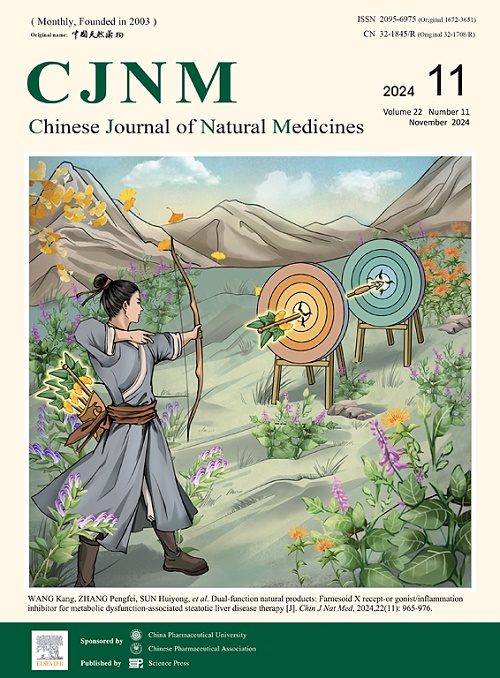Natural diosmin alleviating obesity and nonalcoholic fatty liver disease by regulating the activating the AMP-activated protein kinase (AMPK) pathway
IF 4.9
2区 医学
Q1 INTEGRATIVE & COMPLEMENTARY MEDICINE
引用次数: 0
Abstract
Obesity and metabolic dysfunction-associated steatotic liver disease (MASLD) are linked to numerous chronic conditions, including cardiovascular disease, atherosclerosis, chronic kidney disease, and type II diabetes. Previous research identified the natural flavonoid diosmin, derived from Chrysanthemum morifolium, as a regulator of glucose metabolism. However, its effects on lipid metabolism and underlying mechanisms remained unexplored. The AMP-activated protein kinase (AMPK) pathway serves a critical function in glucose and lipid metabolism. The relationship between diosmin and the AMPK pathway has not been previously documented. This investigation examined diosmin's capacity to reduce lipid content through AMPK pathway activation in hepatoblastoma cell line G2 (HepG2) and 3T3-L1 cells. The study revealed that diosmin inhibits lipogenesis, indicating its potential as an anti-obesity agent in obese mice. Moreover, diosmin demonstrated effective MASLD alleviation in vivo. These findings suggest that diosmin may represent a promising therapeutic candidate for treating obesity and MASLD.
天然薯蓣皂苷通过调节活化amp活化蛋白激酶(AMPK)途径减轻肥胖和非酒精性脂肪肝疾病
肥胖和代谢功能障碍相关的脂肪变性肝病(MASLD)与许多慢性疾病有关,包括心血管疾病、动脉粥样硬化、慢性肾脏疾病和II型糖尿病。先前的研究发现,从菊花中提取的天然类黄酮二司米是葡萄糖代谢的调节剂。然而,其对脂质代谢的影响及其潜在机制仍未被探索。amp激活的蛋白激酶(AMPK)途径在葡萄糖和脂质代谢中起关键作用。地奥司明和AMPK通路之间的关系以前没有文献记载。本研究在肝母细胞瘤细胞系G2 (HepG2)和3T3-L1细胞中检测地奥米明通过AMPK通路激活降低脂质含量的能力。该研究表明,地奥司明抑制脂肪生成,表明其作为肥胖小鼠的抗肥胖剂的潜力。此外,地奥米明在体内显示出有效的MASLD缓解。这些发现表明,地奥米可能是治疗肥胖和MASLD的有希望的治疗候选者。
本文章由计算机程序翻译,如有差异,请以英文原文为准。
求助全文
约1分钟内获得全文
求助全文
来源期刊

Chinese Journal of Natural Medicines
INTEGRATIVE & COMPLEMENTARY MEDICINE-PHARMACOLOGY & PHARMACY
CiteScore
7.50
自引率
4.30%
发文量
2235
期刊介绍:
The Chinese Journal of Natural Medicines (CJNM), founded and sponsored in May 2003 by China Pharmaceutical University and the Chinese Pharmaceutical Association, is devoted to communication among pharmaceutical and medical scientists interested in the advancement of Traditional Chinese Medicines (TCM). CJNM publishes articles relating to a broad spectrum of bioactive natural products, leading compounds and medicines derived from Traditional Chinese Medicines (TCM).
Topics covered by the journal are: Resources of Traditional Chinese Medicines; Interaction and complexity of prescription; Natural Products Chemistry (including structure modification, semi-and total synthesis, bio-transformation); Pharmacology of natural products and prescription (including pharmacokinetics and toxicology); Pharmaceutics and Analytical Methods of natural products.
 求助内容:
求助内容: 应助结果提醒方式:
应助结果提醒方式:


